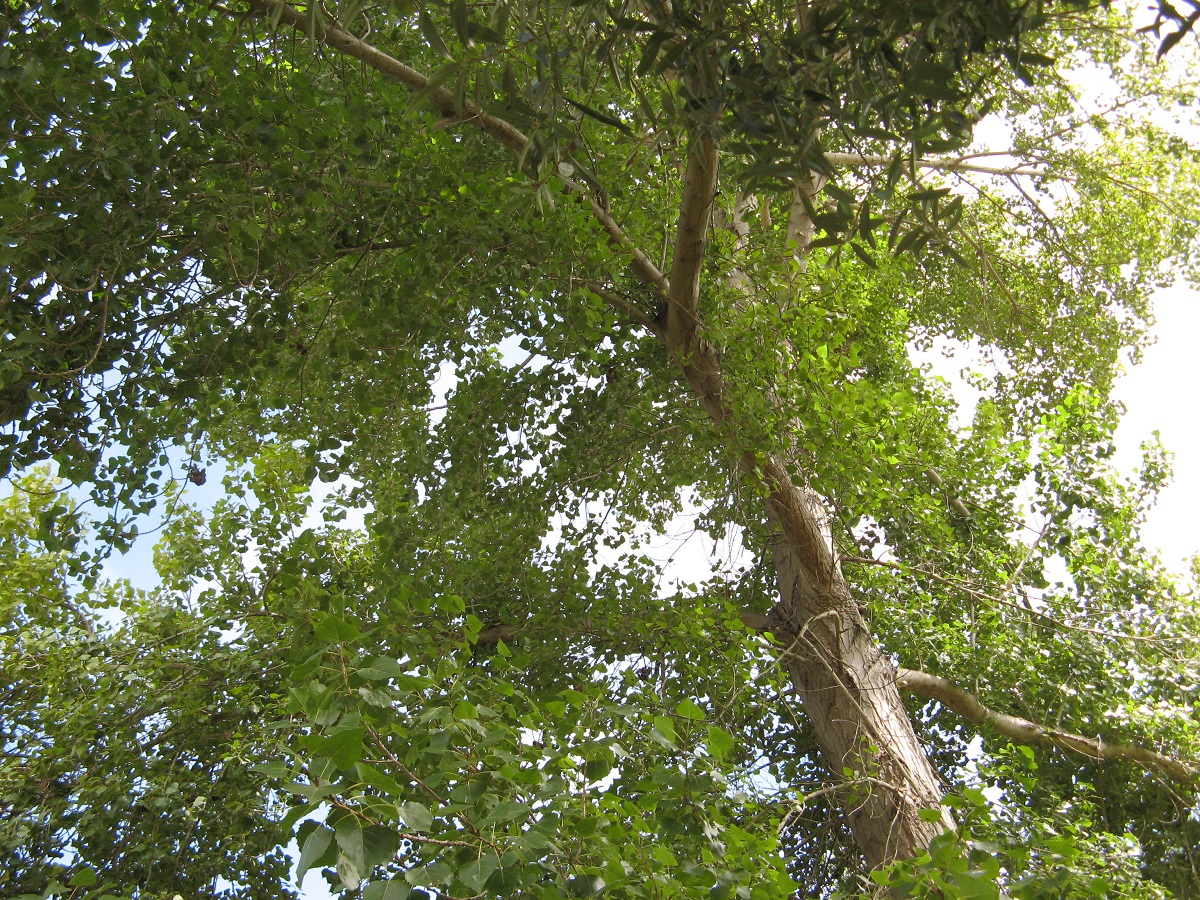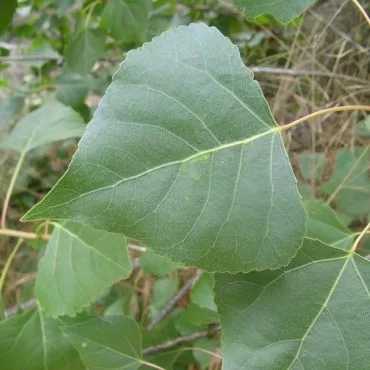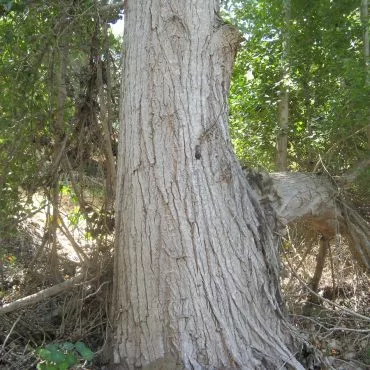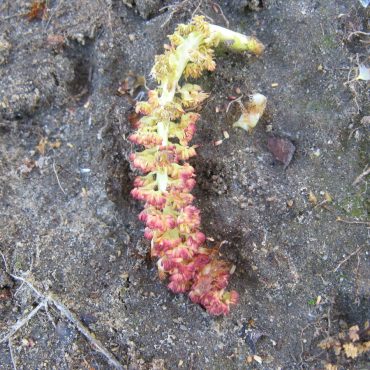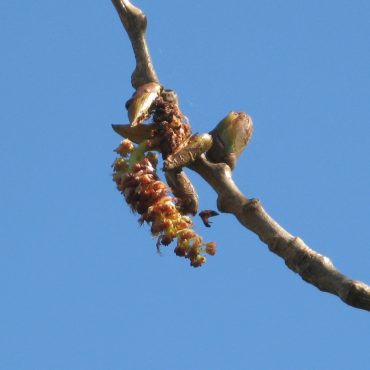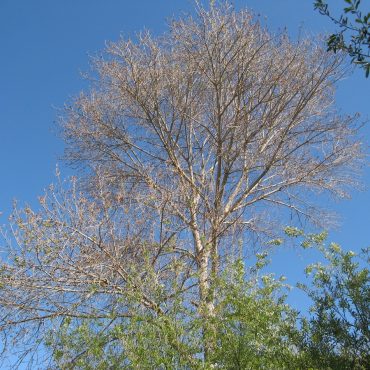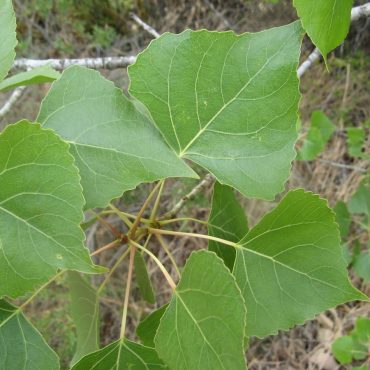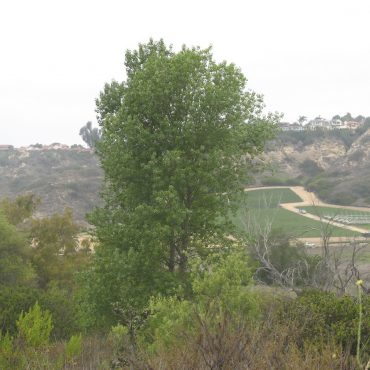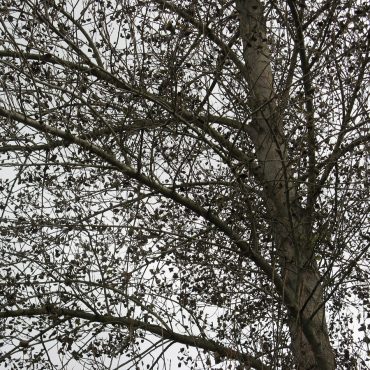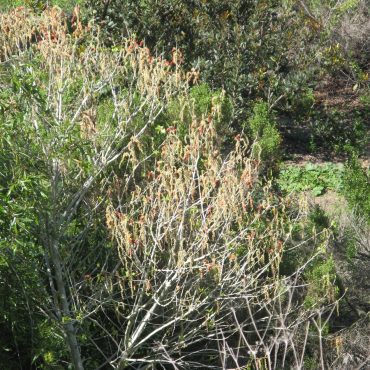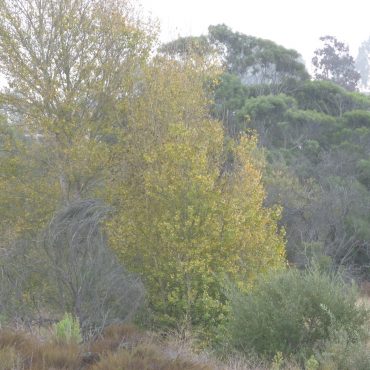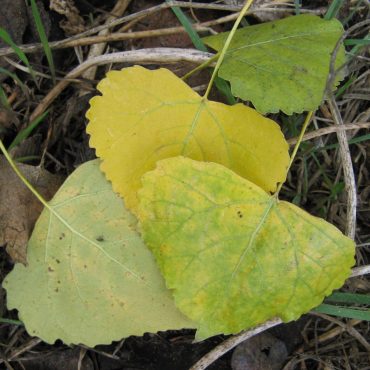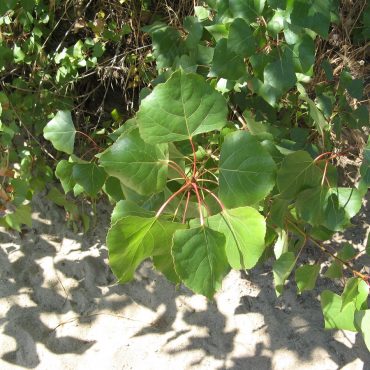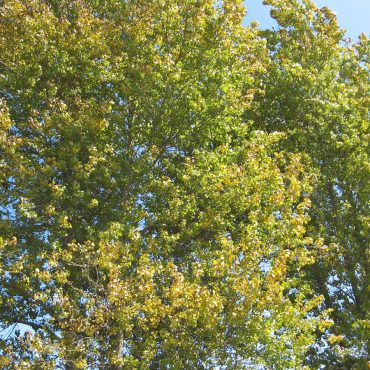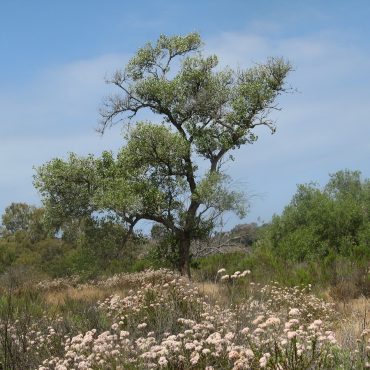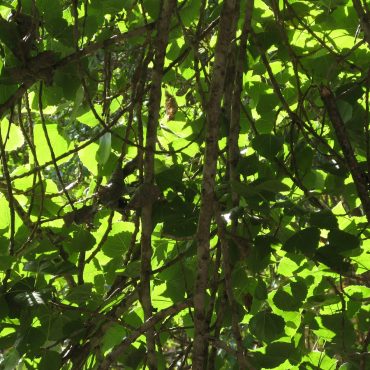Fremont cottonwood (Populus fremontii) is a deciduous tree related to willows, characterized by nearly triangular leaves and small seeds carried on the wind in cottony masses. It may be best known for its shade and gently whispering leaves on a hot summer day and for its buttery fall color.
Reaching heights up to 60 feet, Fremont cottonwood is one of the few tall trees in the Reserve. Cottonwoods need a nearly-constant source of fresh water. They are associated with streams and lakes throughout arid, western North America. The trees in the Reserve are found along natural seeps or along drainage from nearby residential areas.

